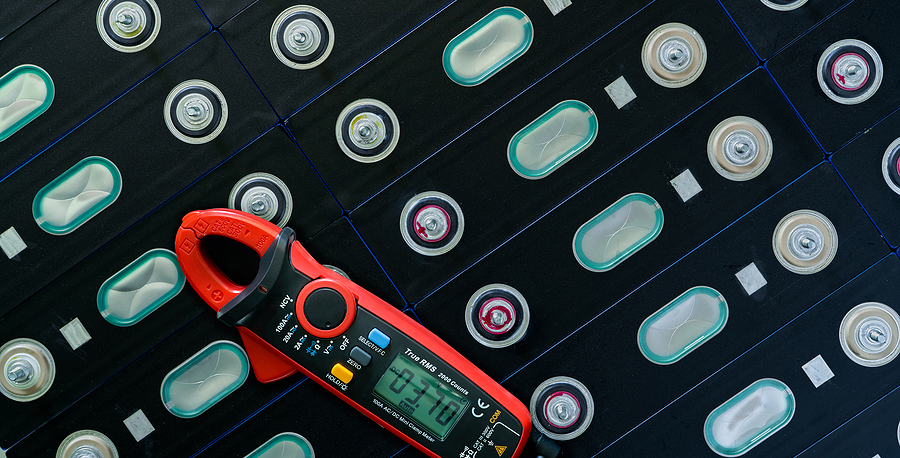Key funding considerations in gigafactory projects
As the global shift towards sustainable energy accelerates, battery gigafactories are becoming increasingly crucial for the energy storage and electric vehicle project supply chains. This article focuses on three key aspects of the development of these projects: funding, construction, supply and offtake considerations. By Thomas Herman, Paul Morton and May-Anaïs Zebdji at Herbert Smith Freehills, Paris.

There have been successes and failures in the European gigafactory project financing market. The successful deals to date share common traits: a multi-sourced funding package underpinned by a robust offtake structure.
Getting the mix right is essential because the construction of gigafactories entails significant costs, which entails complexity. Most successful deals to date have required a mix of funding sources, including government support, multilateral bank support, commercial banks and equity.
Government support
Gigafactory projects are currently at the crossroads of various public policy objectives, ticking all the right boxes. They contribute to regional reindustrialisation, contribute to supply chain security, create jobs and facilitate decarbonisation of energy sources.
Governments are therefore offering a wide range of support, including grants, subsidies, preferential loans, guarantees and other financial incentives to encourage domestic gigafactory projects. Examples include the EU's Innovation Fund (which has provided grant funding to a number of European gigafactory projects) and the Important Projects of Common European Interests (IPCEI) scheme which supports innovative projects; the UK's Automotive Transformation Fund (which offers grant funding to projects that support the UK EV supply chain) and France's Garantie des Projets Stratégiques regime (which can provide a guarantee for up to 80% of a project's debt through Bpifrance and was recently used in the financing of Verkor's innovation centre in Grenoble and is being considered for Verkor's gigafactory in Dunkirk).
However, this government support also comes with a range of stringent undertakings and close monitoring to ensure proper use of the government support. Often payment milestones are linked to meeting key undertakings. Non-compliance with these key undertakings may also trigger the obligation to repay the grant. Careful risk allocation is therefore essential, to ensure that the obligations of each sub-contractor are clear in the event of a delay or other event of default under the relevant support scheme.
Multi-source project financing
Given the capital-intensive nature of gigafactories, large amounts of debt are typically required to finance gigafactory projects. Gigafactory projects may be financed through senior secured project financing by commercial banks, pension funds and other institutional investors. But additional support from multilateral and policy banks, as well as export credit agencies can be essential to bring together commercial lenders on these types of projects.
In this context, it is essential for gigafactory developers to understand the complex intercreditor issues that inevitably arise on multi-source financings, and the relationships and commercial and policy objectives of different lender groups. In particular, meeting the policy objectives of multilateral, policy banks and export credit agencies while also achieving commercially balanced terms for the project company and the other lenders is key to efficiently finance gigafactory projects.
Equity investment and joint ventures
Equity is also an important aspect of the financing of gigafactory projects, particularly at the beginning of the project before any debt facilities are made available. Gigafactory developers are increasingly entering into joint ventures (JVs) with original equipment manufacturers (OEMs), which allows them to attract other investors by demonstrating credible OEM backing through equity and offtake arrangements.
Key elements regarding the construction of a gigafactory
Given the complexity and the number of processes involved in battery production, construction/commissioning is rarely fronted by a single entity (such as an EPC contractor). The manufacture of battery cells requires a number of independent specialists to be brought together in a single facility, each with their own construction process and requiring specific equipment and personnel.
For the developer, this means dividing the project into work packages by combining several contract models and implementing an appropriate multi-contracting strategy to deal with the interface risks.
This approach increases complexity, as well as risks of completion delays and underperformance. In particular, interface risks can arise through:
- design and technology interfaces and having to manage system-wide testing, commissioning and start-up;
- information exchange and rely-upon data between packages;
- physical interface and co-ordination issues resulting from the logistics of co-working within a common site and programme;
- potential scope gaps between packages of work.
In this context, lenders will pay particular attention to cost overrun and completion support or outturn cost. They will look at the multi-contracting strategy build by the developer to analyse the construction phase risks on a project-wide basis but also with respect to specific risk events.
To reassure lenders and to protect themselves against the risks associated with disaggregated construction contracts, developers must build a multi-contracting strategy that is as coherent and as straightforward as possible. To reach this goal, developers must:
- select high-performance contractors;
- generate competition between contractors and value for money;
- facilitate flexibility in procurement, notably by including adaptable terms for particular scopes, reservations of capacity and long-lead procurement, work scheduling and accommodating changes;
- assign clear responsibilities in order to reduce the risks of "gaps" in responsibility;
- avoid unnecessary division of work in order to minimise interfaces;
- have a fully integrated project-wide programme;
- ensure that programmes are consistent across packages;
- procure a robust insurance programme addressing the financial impact of risks retained by the developer, including defects and delay in start-up, as well as secure a strong, high quality and experienced procurement, project and contract management teams;
- incorporate sufficient buffers in the project schedule.
Key elements of supply and offtake of gigafactories
In addition to having to secure raw minerals supply, gigafactories developers are exposed to a cost/revenue squeeze if input price fluctuations are not matched by the end battery product price. Equally, given that battery costs account for a significant proportion of the price of an electric vehicle, raw material price spikes can make a whole electric vehicle model production line uneconomic. This plays out in several ways on both the supply and offtake side.
Security of supply
In a context where the competition for critical minerals is fierce and where mines are concentrated geographically, often in countries with complex political situations, OEMs have recognised the strategic importance of a stable and secure critical mineral supply chain.
As a result, OEMs are increasingly securing access to critical battery minerals by contracting large volumes through long-term offtake agreements, with such volumes subsequently allocated to their nominated gigafactories.
Managing market price fluctuation
Market price fluctuation and retaining the economic benefit from securing large volumes directly with mining companies are also key concerns for the viability of the economic model of gigafactory projects. There are a number of different approaches to managing and controlling input commodity costs and ensuring price transparency, including full cost pass-through, long-term discounts (retaining exposure to price fluctuations but with a discount) and cap-and-floor pricing structures (limiting the impact of price fluctuations in both directions).
ESG constraints
The battery minerals industry also entails supply chain risks arising from human rights violations, environmental damage, as well as broader compliance risks. States and other stakeholders (legislators, investors, lenders and NGOs) are placing increasing pressure on producers of consumer products to ensure that battery minerals are sourced in a clean and responsible manner and the regulatory landscape evolves to meet these challenges.
Gigafactory developers must therefore be particularly vigilant and transparent about their environmental, social and governance (ESG) obligations, by incorporating ESG risk management procedures into agreements, such as performing audits of raw material suppliers and allocating responsibilities accordingly.
Offtake
Project financing requires steady revenue flows, which means the project needs one or more bankable offtake contract(s) with a creditworthy offtaker(s) for a period of time that allows debt repayment. This may not align with the needs of OEMs, who may have shorter time horizons (e.g., in line with the life of a production line). Parties will therefore need to pay close attention to the allocation of risks in the offtake agreement, including the ability to sell to third parties on the market. OEMs will pay particular attention to the sizing of any long-term take or pay arrangements and termination compensation in various scenarios.





